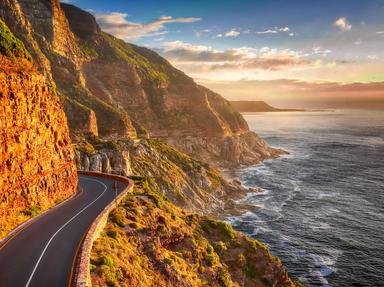
South Africa's Three Capitals Trivia Quiz
The Union of South Africa in 1910 brought together the Cape, Natal, Transvaal, and Orange River colonies into one country within the British Commonwealth, until 1961 when South Africa became a Republic. What do you know of its three different capitals?
A classification quiz
by reedy.
Estimated time: 4 mins.
- Home
- »
- Quizzes
- »
- Geography Trivia
- »
- Africa
- »
- South Africa